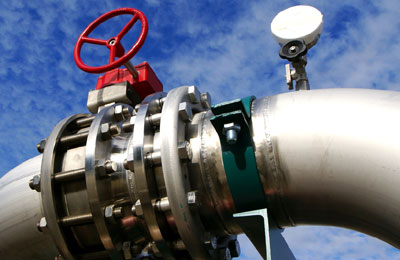
Aramco denies Wasit gas project delay
Al Khobar, October 3, 2012
Saudi Aramco, the world's largest energy company, has denied any delay to the Wasit gas project, which is scheduled to come online in 2014.
"The project is on track and proceeding per schedule," it said in a statement in response to Reuters questions about possible setbacks.
Three industry sources were quoted by Reuters as saying the start-up of Wasit project could be delayed by at least a year because the gas coming from fields offshore has higher sulfur content than expected.
Wasit is part of the company's push to raise production of gas from fields not shared with oil wells and is an important part of plans to increase output of raw gas from 10.2 billion cubic feet per day (bcfd) in 2010 to 15.5 bcfd in 2015.
"The delay could be one year or more, a big portion of the material for the pipelines has to be changed," said one of the sources, who declined to be identified. "The gas is more complex," he said.
Gas with high levels of sulfur - also called sour gas - is tougher to process than other natural gas reserves and the two other industry sources said the higher than expected sulfur content of the feed gas would affect the onshore portion of the project because design changes were needed to handle it.
The estimated $4.7 billion Wasit gas project, split into onshore and offshore construction packages, will process 2.5 bcfd of non-associated gas from the offshore fields Hasbah and Arabiyah.
It is expected to supply 1.75 bcfd of sales gas and could potentially produce up to 3.05 bcfd to meet peak summer demand, Aramco said in its 2011 annual review.
"It could be that the original well testing and gas analyses were from a less sour zone that does not represent the gas composition in the other zones," one of the sources said.
Saudi Aramco signed construction deals for the offshore pipelines and platforms, along with onshore sulfur recovery units, natural gas liquids (NGL) units and cogeneration plants in 2011.
"They have two options. One is to add a costly gas sweetening and dehydration platform offshore to treat the gas and avoid hydrogen sulfide corrosion or corrosion deposits that get accumulated in the pipelines," the source said.
The other option is to build new pipelines able to carry the sour gas safely and treat it in additional modules at the Wasit plant, but offshore platforms will still need to fit anti-corrosion systems, he said.
"Both options are very expensive and will represent delays of at least two years if the decision is to produce all the gas zones in the two offshore fields," he added.
Aramco has stepped up gas exploration after it completed a massive oil exploration programme in 2009-2010. It now manages known gas reserves of 279 trillion cubic feet, the fourth largest in the world.
While it has raised gas output significantly over the past few years, the world's largest exporter has not been able to keep up with a 6 percent per year increase in Saudi demand, driven by population and industrial boom.
The state oil giant has made discoveries in the north of the kingdom and has started drilling in the Red Sea. It plans to build a gas plant in Midyan, in the kingdom's north, and has just completed its giant Karan gas field.
In the Empty Quarter, Aramco and Royal Dutch Shell are studying development of Kidan, also rich in sour gas. Kidan is near the 750,000 barrels per day Shaybah oilfield, one of the biggest in the world's top oil exporter. - Reuters







